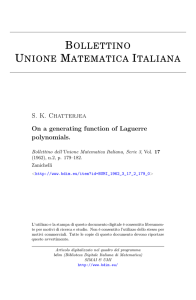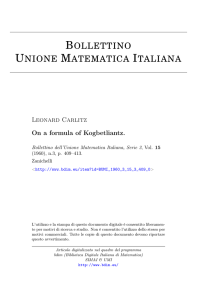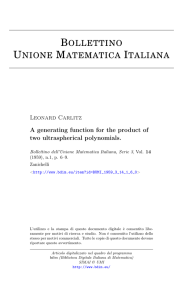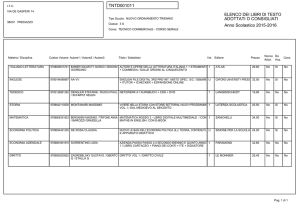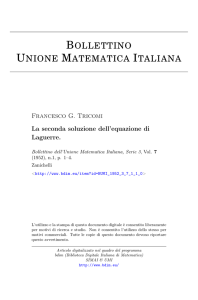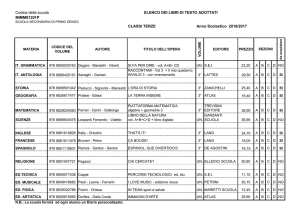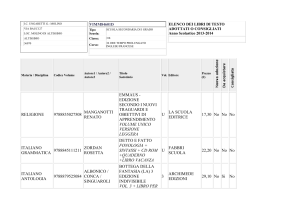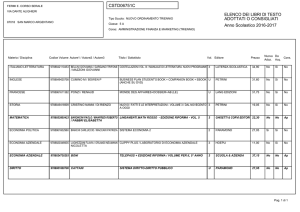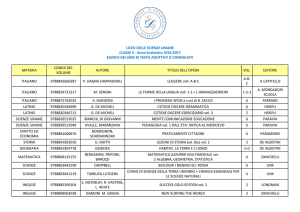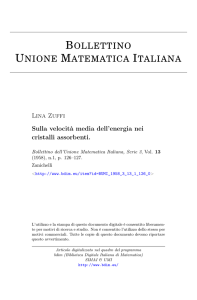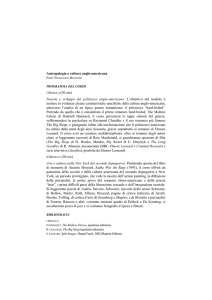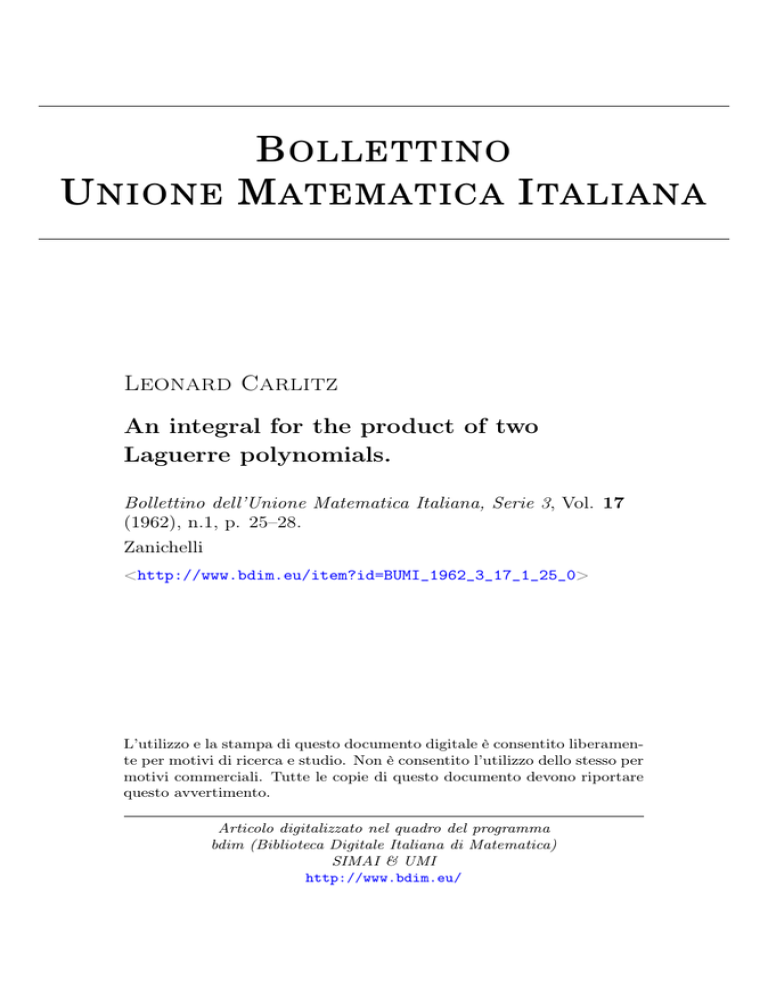
B OLLETTINO
U NIONE M ATEMATICA I TALIANA
Leonard Carlitz
An integral for the product of two
Laguerre polynomials.
Bollettino dell’Unione Matematica Italiana, Serie 3, Vol. 17
(1962), n.1, p. 25–28.
Zanichelli
<http://www.bdim.eu/item?id=BUMI_1962_3_17_1_25_0>
L’utilizzo e la stampa di questo documento digitale è consentito liberamente per motivi di ricerca e studio. Non è consentito l’utilizzo dello stesso per
motivi commerciali. Tutte le copie di questo documento devono riportare
questo avvertimento.
Articolo digitalizzato nel quadro del programma
bdim (Biblioteca Digitale Italiana di Matematica)
SIMAI & UMI
http://www.bdim.eu/
Bollettino dell’Unione Matematica Italiana, Zanichelli, 1962.
An intégral for the product of two Laguerre polynomials
by LÉONARD CARLITZ (a Durham, TJ. S. A.) (*)
Summary. - The product L^(x)L^(y) ts représentée by a double intégral.
Let
(1)
Lm (x) = J
dénote the LAGIJERRE polynomial of degree w. Then
Lm (x)Ln (y) -
rt<) gSfl
( - l)H- -fj
(m-*-n — r — s) !
~
F
(m — r) ! (n — s) ! T(a -h r •+- 1)T^ -4- s -+- 1) '
Silice [4. p. 263]
r(|jn-v -f- 1)
2^+v r
— —— j e(^-v)9*
it follows that
Lm {x)Ln iy) =
i — r(a -+- m -f- i)r(p -H w
7T 7T
" 2 2"
Cos
^"" ^ i!(w
+—/c ç
i)!r(
c o g /c
p
(*) Pervemita alla Segreteria dellU.M.I. il 19 dicembre 1961.
26
LEONARD CARLTTZ
Using (1) this reduces to
(3>, ,
2 + P +
n (y) =
-g
K2
,3)
7T
71
¥
2l
r ( a + m + l)F(p + n
r(<x
.] ƒ
^
ivm+M
y
)
\
cos6
COS Cp
In particular, when x = y (3) reduces to
i w («} J^ (a:) - ^ ^ ^
(4)
*/
/
7T
7T
" 2
~"2
cos
r(a+p +
( m — w ) ? C 0 R ( a — P) 0 cos*»-!^* cp c o s ^ + P 6
: c o s (6 — <p) c o s 6\
This formula may be compared with WATSOK'S formula [3]:
Jbm (X)
±jn (X)
F(a -+- m
21 IE
2 2
'o o
As pointed out by WATSOIST. (5) includes BATLEY'S formula [2]
7T
J (w+w)
(6)
Hm(x)Hn{x
T
fff"
*
[ TT
(»H-n)! - J 1 Jtlm-
sec <p) cos
1
2
0
cos ^ ( m
AN INTEGRAL FOR THE PRODUCT OF TWO LAGUERRE POLYNOMIAXS
27
where
It is not clear hovv to obtain a resalt like (6) from (8) or (4).
However using (7) and (2) we get
f
w—2r-j-2s)ô*
Since the formula
ĥ
(m — 2r) ! {n — 2s) !
7T
2
is valid for ail r, s pro\dded that 2r -h 2s <. m-*-n,
extend the range o£ r, s and get
_m\n\
we may
r
1
Therefore
TT
. __ . ,
l ml ni
f
(8) B4*)fl^) - - ^ - ^ } 1 J
•where
xny%
«W,
28
LEONARD C4RLITZ
I n particular, when x = y, (8) reduces 1o
Hm(x)H„(y)
2*lm+n)
mlHj
F
i(»+n)
1
which is a disguised version of (6).
In connection with (8) compaie [1, formula (5.5)].
We remark that for the confluent hypergeometric function
<P(a; c ; x ) =
2 -j
r=o
\a
we can prove that
T(a)T(b)
r(<
= —— / i
0
7T
~~ 2
5EEFBEENCES
[1] W. A. AL-SALAN and L. CAHLITZ, Some finite summation formulas
for the classical orthogonal polynomials, « Eendiconti di Matematiea &
délie sue appJicazioni », series 5, vol. 16 (1957), pp. 74-95.
[2] W. JNT. BAIJ.EY, ^ln intégral représentation for the product of two
Hermite polycmials, .Journal of the London Mathematical Society »-,
vol. 13 (1988), pp. 202-203.
[3] Gr. 'N. WATSON, A note on the polnomiais of Heemite and Laguerre,
« Journal of the London Mathematica! (Society % vol. 13 (1938), pp.
204-209.
[4] E. T. WHITTAKER and G. N. WATSON, A course of modem analy$isr
4 th édition, Cambridge. 1927.

